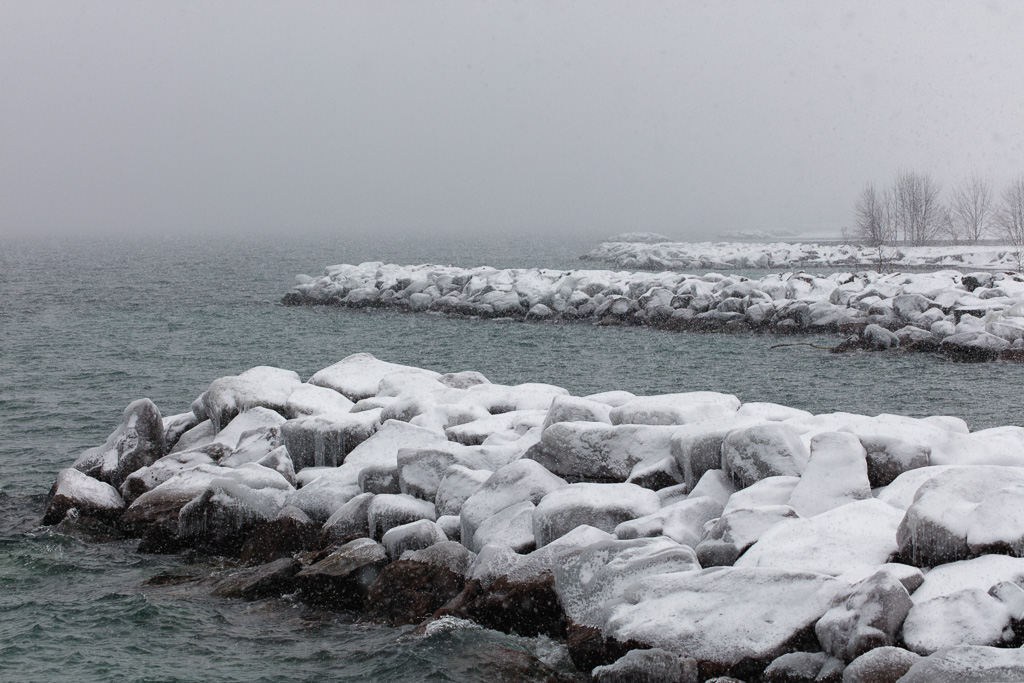In making today’s featured image, I approached the scene from the far side of Kanso. In an earlier post, I mentioned the Japanese aesthetic of Kanso, which can be understood as simplicity or clarity. As a process, it demands that the photographer remove from an image everything that is unnecessary until only the essential remains.
However, in this case I started with a simple image—a snow-covered breakwater extending into Lake Ontario (shown below)—and decided it needed something more. I moved further down the beach and positioned myself with a snow fence in the foreground. To my way of seeing, this is more satisfactory for a couple reasons. First, it adds a sense of depth to the image by creating a crisp foreground. And second, the reddish brown of the fence slats complements the blue-green of the water; the resulting contrast is more dramatic.
I don’t know if the Japanese have a name for a simple, calming image produced by adding features until we arrive at a satisfying sense of balance. If not, let’s make one up. How about Osnak? The opposite of Kanso.
Ironically, although the point of the exercise is to produce a sense of calm through simplicity or clarity, I was anything but calm when I made these photographs. There was a biting wind blowing snow and ice pellets from the west. Ice had crusted on my eyebrows and my fingers were stiff with the cold. We see none of my personal discomfort reflected in the image. The problem with Kanso (or Osnak) is that it hides the personal sacrifices I made to produce the image. Yet there are times when I would prefer it if everyone knew how much I suffer for my art. 🙂

